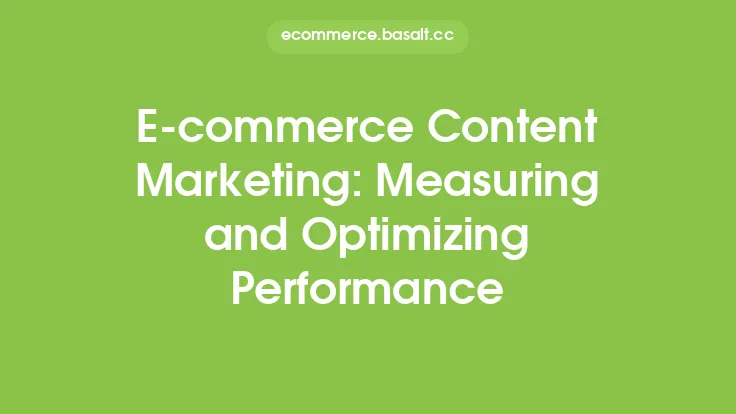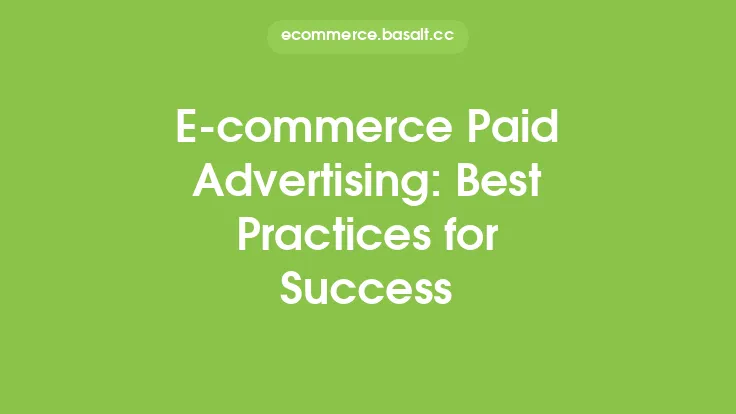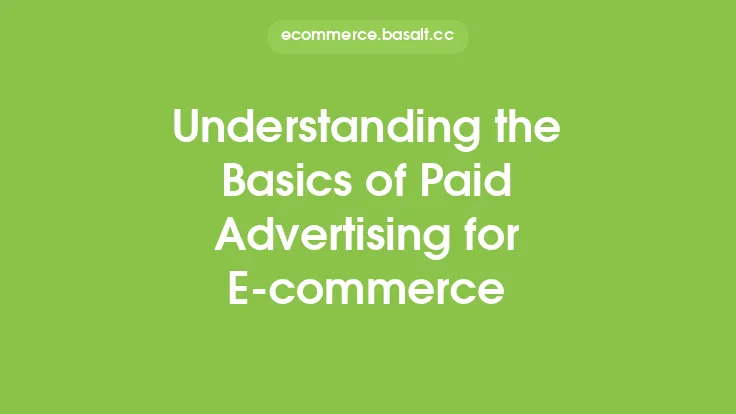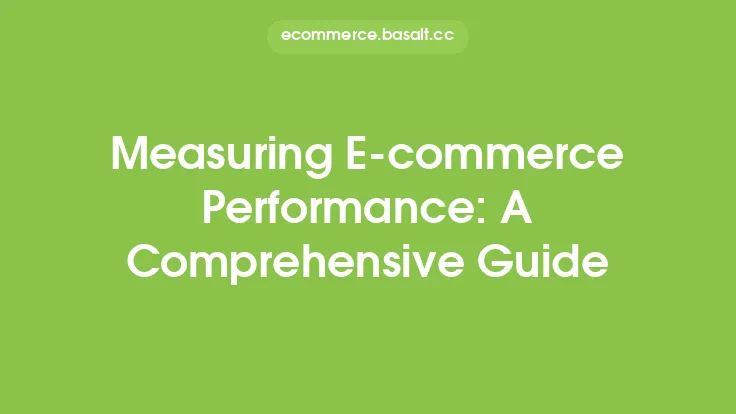When it comes to e-commerce marketing, paid advertising is a crucial component that can drive significant traffic, sales, and revenue for online businesses. However, with the ever-increasing competition in the digital landscape, it's essential to measure and optimize the performance of paid advertising campaigns to ensure maximum return on investment (ROI). In this article, we'll delve into the world of paid advertising for e-commerce, exploring the key metrics to measure, strategies to optimize performance, and best practices to ensure long-term success.
Understanding Key Performance Indicators (KPIs)
To measure the performance of paid advertising campaigns, e-commerce businesses need to track and analyze key performance indicators (KPIs). These metrics provide valuable insights into the campaign's effectiveness, helping marketers identify areas of improvement and optimize their strategies. Some of the most important KPIs for paid advertising in e-commerce include:
- Conversion rate: The percentage of users who complete a desired action, such as making a purchase or filling out a form.
- Cost per conversion (CPC): The cost of each conversion, which helps marketers evaluate the campaign's ROI.
- Return on ad spend (ROAS): The revenue generated by each dollar spent on advertising, providing a clear picture of the campaign's profitability.
- Click-through rate (CTR): The percentage of users who click on an ad after seeing it, indicating the ad's relevance and appeal.
- Cost per click (CPC): The cost of each ad click, which affects the campaign's overall budget and ROI.
Setting Up and Tracking Campaigns
To accurately measure and optimize paid advertising performance, e-commerce businesses need to set up and track their campaigns effectively. This involves:
- Creating a robust tracking system: Utilize tools like Google Tag Manager, Google Analytics, or third-party tracking software to monitor campaign performance and collect data.
- Setting up conversion tracking: Define and track conversions, such as purchases, sign-ups, or downloads, to evaluate the campaign's effectiveness.
- Configuring ad targeting: Use targeting options like demographics, interests, behaviors, and lookalike audiences to ensure ads reach the most relevant users.
- Monitoring ad spend and budget: Keep a close eye on ad spend and budget to avoid overspending and ensure maximum ROI.
Optimizing Ad Creative and Targeting
To improve paid advertising performance, e-commerce businesses need to optimize their ad creative and targeting strategies. This involves:
- Testing ad variations: Create multiple ad versions with different images, headlines, and copy to determine which ones perform best.
- Refining ad targeting: Continuously monitor and adjust targeting options to ensure ads reach the most relevant and high-converting audiences.
- Utilizing lookalike targeting: Target users who resemble existing customers or high-value audiences to expand reach and improve conversion rates.
- Leveraging user-generated content: Incorporate customer reviews, ratings, and testimonials into ad creative to build trust and credibility.
Analyzing and Acting on Data
To maximize the impact of paid advertising campaigns, e-commerce businesses need to analyze and act on data regularly. This involves:
- Regularly reviewing campaign performance: Monitor KPIs, ad spend, and budget to identify areas of improvement and optimize strategies.
- Identifying trends and patterns: Analyze data to uncover trends, patterns, and correlations that can inform future campaign decisions.
- Making data-driven decisions: Use data insights to adjust targeting, ad creative, and budget allocation to improve campaign performance and ROI.
- A/B testing and experimentation: Continuously test and experiment with new ad creative, targeting options, and bidding strategies to optimize campaign performance.
Scaling and Automating Campaigns
To take paid advertising campaigns to the next level, e-commerce businesses need to scale and automate their efforts. This involves:
- Utilizing automation tools: Leverage tools like Google Ads' automated bidding strategies or third-party automation software to streamline campaign management and optimization.
- Scaling ad spend and budget: Gradually increase ad spend and budget to expand reach, improve conversion rates, and drive more sales.
- Expanding targeting options: Continuously explore new targeting options, such as new demographics, interests, or behaviors, to reach high-value audiences.
- Integrating with other marketing channels: Combine paid advertising with other marketing channels, such as email marketing, social media, or influencer marketing, to create a cohesive and powerful marketing strategy.
Best Practices for Long-Term Success
To ensure long-term success with paid advertising, e-commerce businesses need to follow best practices that prioritize transparency, accountability, and continuous improvement. Some of these best practices include:
- Setting clear goals and objectives: Establish specific, measurable, and achievable goals for paid advertising campaigns to ensure everyone is working towards the same objectives.
- Maintaining transparency and accountability: Regularly report on campaign performance, ad spend, and ROI to ensure stakeholders are informed and aligned.
- Continuously monitoring and optimizing: Regularly review campaign performance, identify areas of improvement, and adjust strategies to ensure maximum ROI and long-term success.
- Staying up-to-date with industry trends: Continuously educate yourself on the latest paid advertising trends, best practices, and platform updates to stay ahead of the competition.





